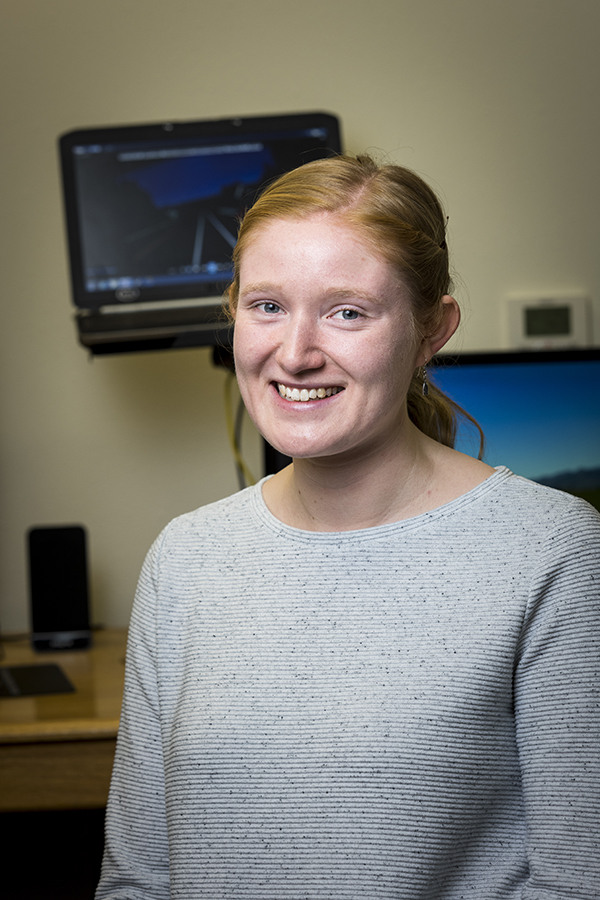Amy Wyman, a second-year doctoral student in civil engineering, has been awarded a prestigious graduate fellowship from the Dwight David Eisenhower Transportation Fellowship Program. The $35,500 award from the U.S. Department of Transportation provides funding for “the nation’s brightest minds” to pursue master’s or doctoral degrees in transportation-related disciplines.
Wyman, who grew up in Portland, earned her Honors Bachelor of Science in Civil Engineering from Oregon State University in 2017. After graduating, she spent two years in Phoenix working as a traffic engineer for consulting firm Burgess & Niple.
She returned to Oregon State in 2019 with the ultimate goal of becoming a professor herself. Her current research focuses on human factors in transportation, with an emphasis on improving safety for pedestrians and bicycles on shared roadways.
“I love that civil engineering is dedicated to public service, and that I share that desire to be a public servant with many of my classmates,” Wyman said. “Of course, I like the technical aspects of my discipline, but it’s the people who have made my experiences in industry and academia truly special.”
Wyman says she has had several fantastic mentors along the way who have inspired and guided her. One of those mentors is her graduate advisor, David Hurwitz, professor of civil and construction engineering and Eric H.I. and Janice Hoffman Faculty Scholar. Wyman was fortunate to meet him when she was still an undergraduate; he also served as her Honors College thesis advisor.
“Dr. Hurwitz was the first, and only, person to suggest I might consider a career as a professor,” Wyman said. “At the time, it hadn’t even occurred to me. A light clicked on, and I realized, ‘Oh yeah, Dr. Hurwitz has a job!’”
Wyman also credits the Women and Minorities in Engineering program at Oregon State, DKS Associates in Portland (where she did her first internship), and her project manager in Phoenix among those who have helped guide her. She says she hopes to “pay it forward” someday, by doing for future students what her mentors have done for her.
“I really love being part of the School of Civil and Construction Engineering, and I genuinely think it’s a special community,” she said. “I’ll never forget how Cindy Olson, who works in the front office, was so welcoming when I first walked in as an uncertain undergraduate hoping to change my major to civil engineering. She knew my name after the first visit. I remember thinking, ‘This is a good place.’”


